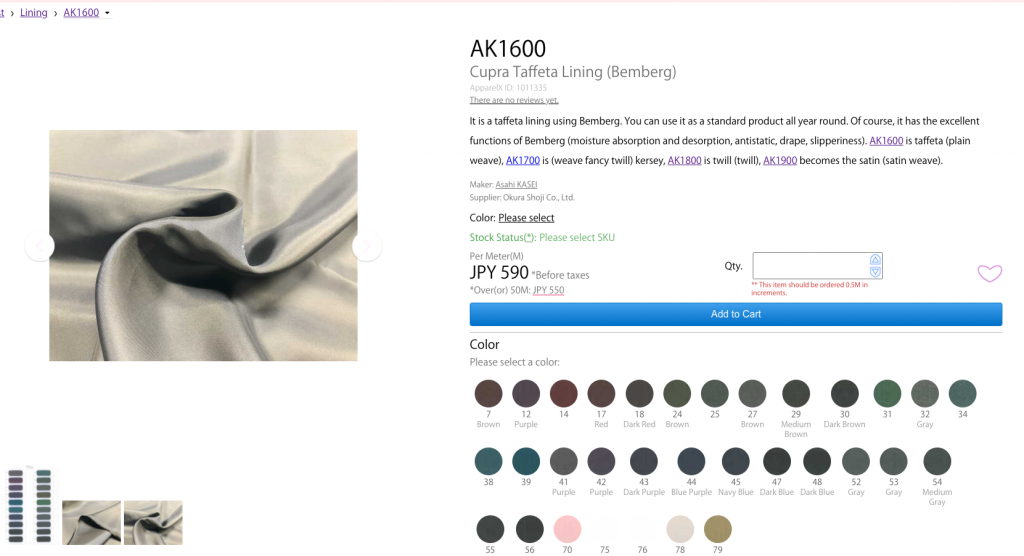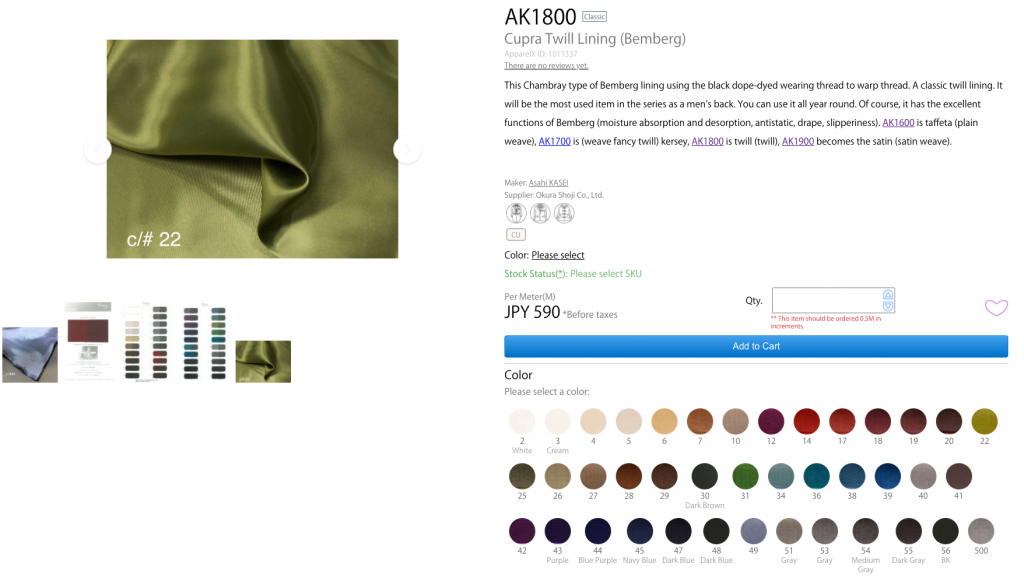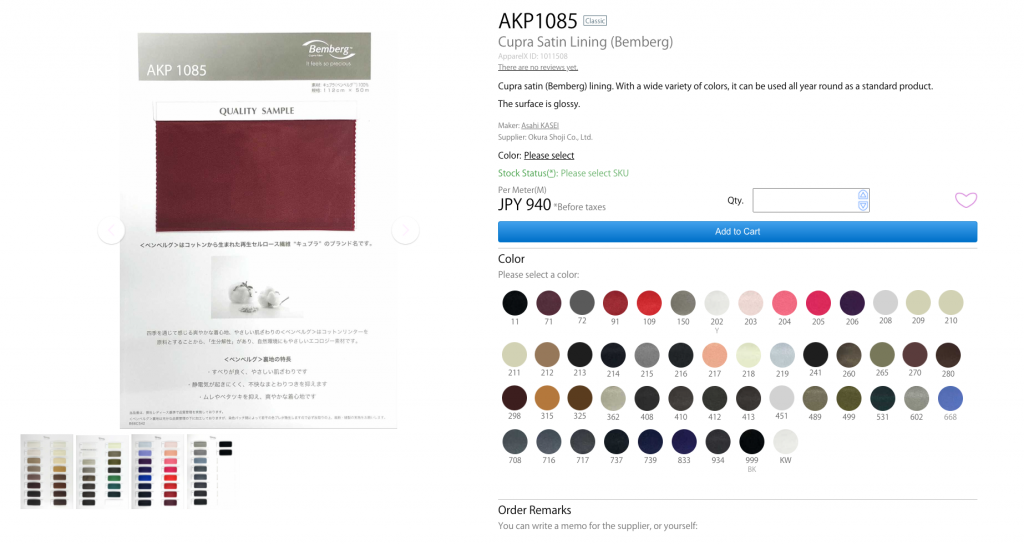Introduction: Linings basic weaving methods
There are three basic ways of weaving fabric: plain weave, twill weave, and satin weave.
And linings are no different.
This time, let’s talk about different types of lining weaving methods.
Plain weave (taffeta)

Plain weave is a fabric made by alternately crossing one warp and one weft yarn. It is strong and durable against friction because it has many points of structure, but it has the disadvantage that it is difficult to make thick fabrics. Since it is difficult to make thick fabrics, it is often used for men’s suits and jackets for spring and summer linings, while ladies’ linings are used regardless of the season due to the softness and texture of plain weave.
If you see “taffeta” in a lining sample book, it is a plain weave lining.
Twill weave

Twill weave, also called twill, is one of the three primary weave systems. It is a weave in which two or three warp yarns are floated and one warp yarn is woven through the other.
Compared to plain weave, it has fewer points of structure and is slightly less resistant to friction, but it is rich in luster.
It can be used to weave thicker fabrics, and is also more flexible and wrinkle resistant.
Twill weave is used for men’s suits and coats, and although twill weave has always been associated with fall and winter, its good coloration and durability make it suitable for use all year round.
People tend to prefer thin linings, so there are twill-weave products with a texture similar to plain weave by using a thinner thread count or changing the weight.
Satin weave

Satin weave is also called satin, and you may be more familiar with satin.
Compared to plain weave, the warp yarns are longer and appear on the surface (more yarns are floated), so there are more surface areas to show, and although it is slightly inferior in terms of friction and durability, it produces a supple and shiny fabric.
Due to the structure of satin weave, it is prone to yarn snagging, but it is used for dresses and other applications because of its luster and color, which are unique to satin.
Summary
Twill weave is often used for men’s suits, and there is a tendency to seek strength in the fabric, especially in ready to wear suits, where the lining is used with co-sleeves.
Plain weave is generally used for women’s suits, because of the emphasis on texture.
Satin is used for high-class products, but you can use lining according to your preference in terms of thickness, texture, and color.
We hope you can find the suitable linings for your collection! For more Linings, please visit our Linings product list.



